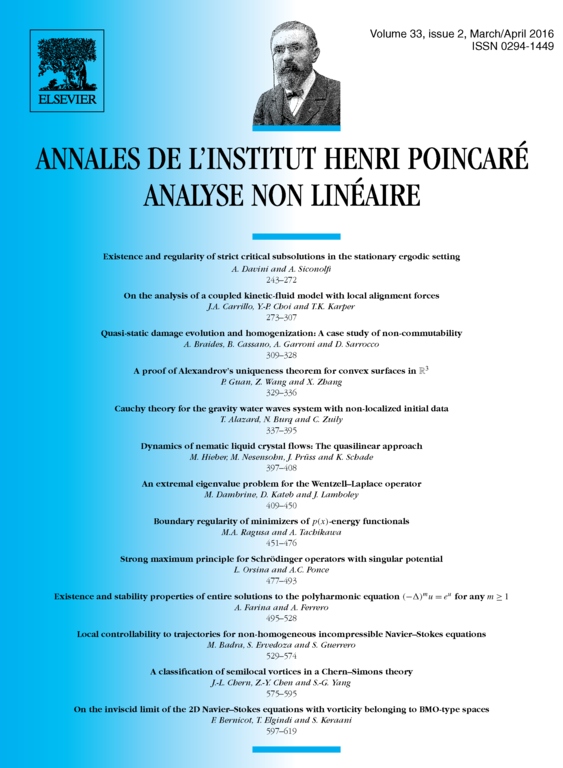Dynamics of nematic liquid crystal flows: The quasilinear approach
Matthias Hieber
Technische Universität Darmstadt, Fachbereich Mathematik, Schlossgarten-Strasse 7, D-64289 Darmstadt, Germany; University of Pittsburgh, 607 Benedum Engineering Hall, Pittsburgh, PA 15261, USAManuel Nesensohn
Technische Universität Darmstadt, Fachbereich Mathematik, Schlossgarten-Strasse 7, D-64289 Darmstadt, GermanyJan Prüss
Martin-Luther-Universität Halle-Wittenberg, Institut für Mathematik, Theodor-Lieser-Strasse 5, D-06120 Halle, GermanyKatharina Schade
Technische Universität Darmstadt, Fachbereich Mathematik, Schlossgarten-Strasse 7, D-64289 Darmstadt, Germany

Abstract
Consider the (simplified) Leslie–Ericksen model for the flow of nematic liquid crystals in a bounded domain for . This article develops a complete dynamic theory for these equations, analyzing the system as a quasilinear parabolic evolution equation in an -setting. First, the existence of a unique local strong solution is proved. This solution extends to a global strong solution, provided the initial data are close to an equilibrium or the solution is eventually bounded in the natural norm of the underlying state space. In this case the solution converges exponentially to an equilibrium. Moreover, the solution is shown to be real analytic, jointly in time and space.
Résumé
On considère le modèle de Leslie–Ericksen pour les cristaux liquides nématiques dans un domaine borné . On obtient une théorie dynamique complète pour ce système, analysé comme une équation d'évolution quasi-linéare dans le cadre . En particulier, on démontre l' existence et l'unicité locales d'une solution forte, qui s'étend en un solution forte globale si les conditions initiales sont près d'un équilibre. De plus, on montre que la solution est analytique réelle en espace et temps.
Cite this article
Matthias Hieber, Manuel Nesensohn, Jan Prüss, Katharina Schade, Dynamics of nematic liquid crystal flows: The quasilinear approach. Ann. Inst. H. Poincaré Anal. Non Linéaire 33 (2016), no. 2, pp. 397–408
DOI 10.1016/J.ANIHPC.2014.11.001